Designing for Wellness: Tips to Enhance Indoor Air Quality in Your Home
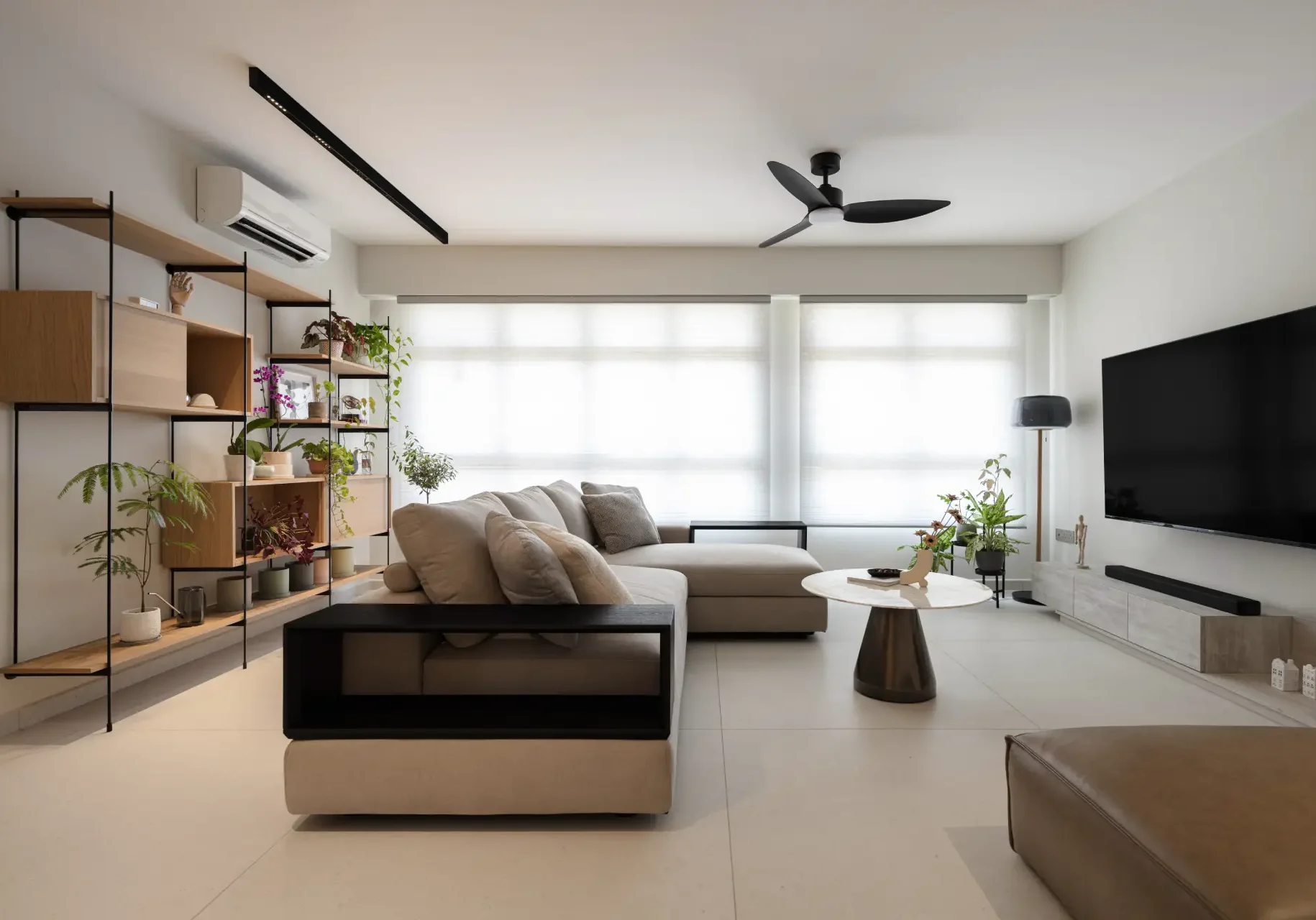
While we often worry about outdoor air quality, we hardly think about indoor air quality and its impact. It’s actually understandable that we think our place is kept clean so the chance for low air quality is less. But that’s not the case, according to the reports from the Environmental Protection Agency (EPA), the indoor air quality may be over 100% higher compared to outside air quality.
That’s not all; poor air quality can also cause significant health problems. It gets even worse for very young and old individuals and if you have family members with respiratory illnesses. This is why you shouldn’t overlook the importance of Indoor Air Quality (AIQ) when designing your home.
When you think of interior design, its purpose is not just to improve the aesthetics and functionality of your home; it can also profoundly impact your indoor air quality. How? Let’s examine some of the ways in which strategic interior design can help improve your home’s air quality.
Ventilation is the Key
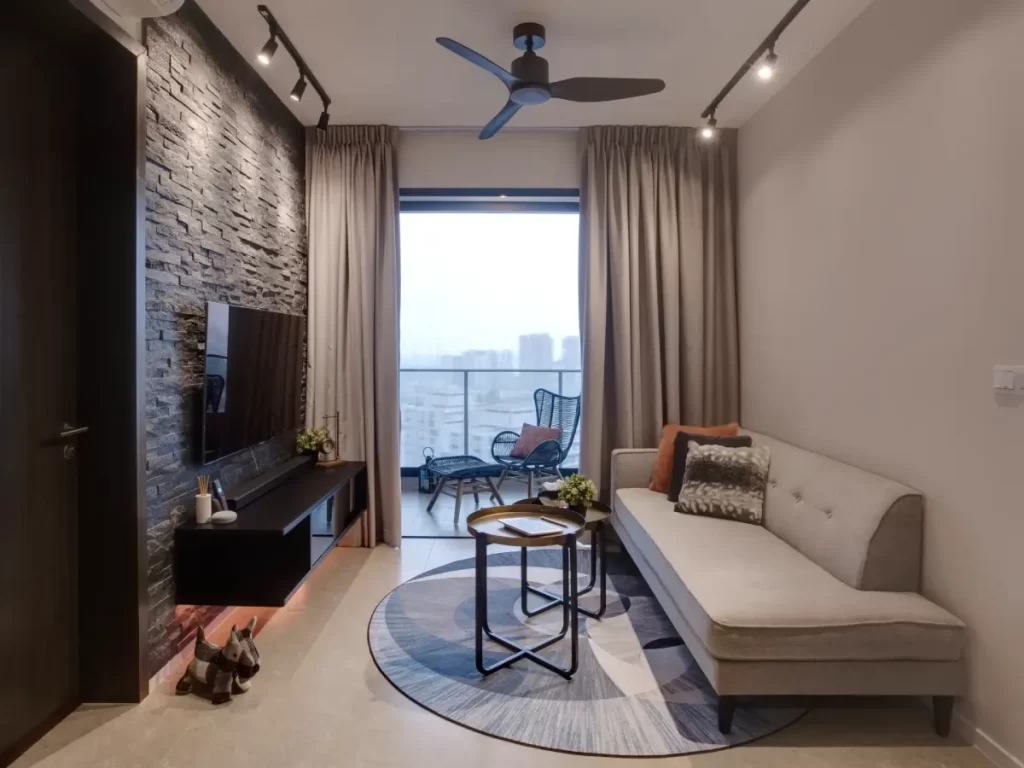
As someone living in Singapore, you know its humid climate. This is one reason to take ventilation seriously. When the air inside your home is stale, pollutants such as volatile organic compounds, moisture, and even carbon dioxide can easily get trapped. This can easily create space for allergens and moulds, which greatly compromise indoor air quality and can result in various respiratory and health issues.
Hence, it is advisable to ventilate your space by letting in fresh air so that it can replace stale indoor air.
Below are some practical ways to do it:
- Make sure to open the windows in the morning or evening. The air should be cool enough to reduce humidity and heat.
- The windows and doors of your home should be cross-ventilated so that the air flows through easily.
- The way you place your furniture has a huge impact on how the air flows. Therefore, arrange them in a way so that the airflow is not blocked. Keep large furniture pieces along the walls so as not to disrupt the airflow.
- Install fans of your preference, as they help to ventilate better through air circulation.
- Draw the curtains to let the outside air flow across the room.
Use Humidifiers
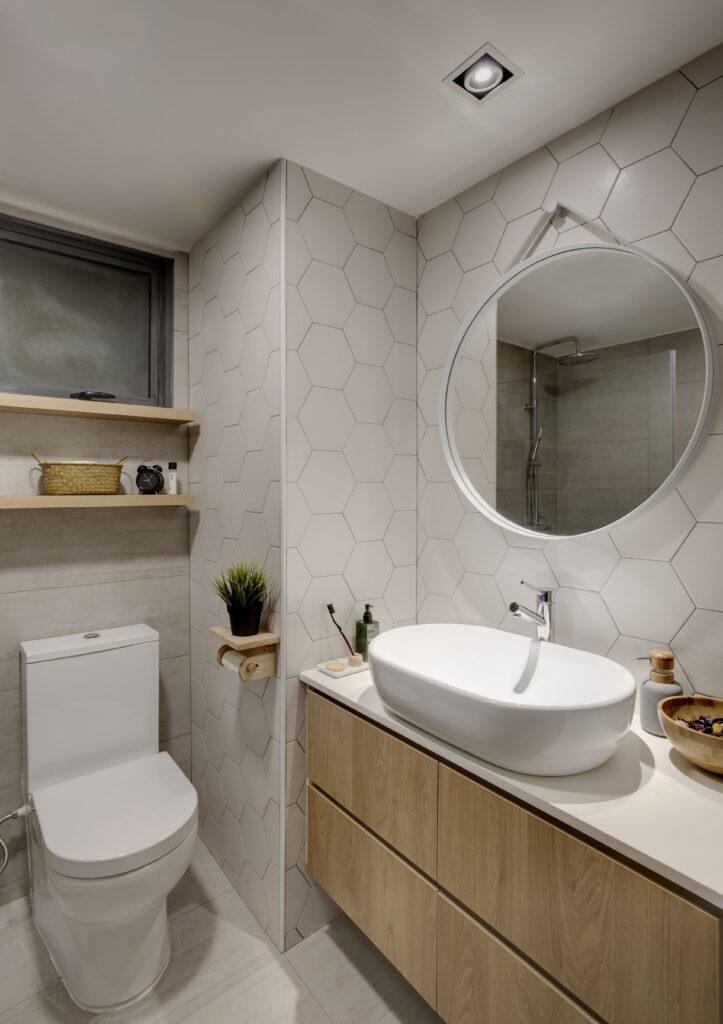
You must control damp areas in your home as they increase the risk of dust mites, mould, and mildew. These can lead to allergies and respiratory problems. By controlling damp areas and the level of humidity in your home, you can drastically improve IAQ levels.
Below are some ways you can implement to control humidity and dampness in your house:
- If you invest in a good humidifier, you will be able to reduce humidity in your home.
- You can consider installing energy-efficient systems.
- If you can invest in an air-conditioner, it’ll be even better as it naturally lowers the level of humidity and the ACs’ filters purify the air.
- Use items, such as dehumidifying bags to absorb moisture from spaces, including storage, drawers, and wardrobes.
- Make sure that there’s enough ventilation for kitchens and bathrooms as they are the key areas that are humid and can become breeding grounds for mould and mildew. If not, try installing exhaust fans.
- If there are leaky roofs and pipes, get them fixed at the earliest you can so you can avoid water accumulation.
- Don’t hang wet towels and clothes indoors as it increases the chances of moisture being released into the air.
Add Indoor Plants Wisely
Most people prefer having indoor plants for decorative purposes. But their purpose goes beyond that because they actually offer you health benefits. Although all indoor plants can help improve indoor air quality, there are certain plants which are known to be very effective in removing pollutants from the air. Examples of such plants include the snake plant, peace lily, aloe vera, spider plant, etc. If you choose the right set of indoor plants, you will be able to decorate your home with them while improving the indoor air quality.
It will enhance the air quality, and also provide a naturally calming vibe to your space. This is important if designing your home for wellness. Check out our interior design project below and see how cool the interior looks with a touch of green and freshness.
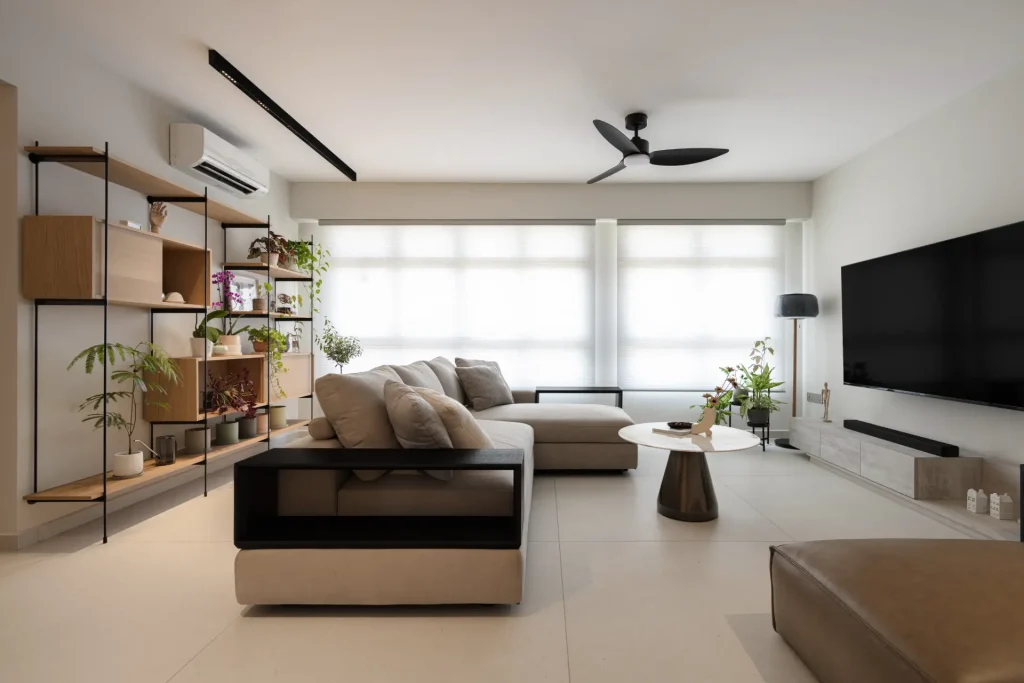
Some of the common indoor plants you can consider are:
- Snake plant – Absorbs carbon dioxide and gives out oxygen.
- Areca Palm – Acts like a humidifier to filter out toxins.
- Peace Lily – It improves humidity and filters VOCs.
- Money Plant – It can grow easily in low light, adding a touch of natural vibe to your home.
- Boston Fern – Gets rid of indoor pollutants.
You don’t have to add all of these, rather select a few and decorate your interior elegantly.
Get Rid of Pollutants
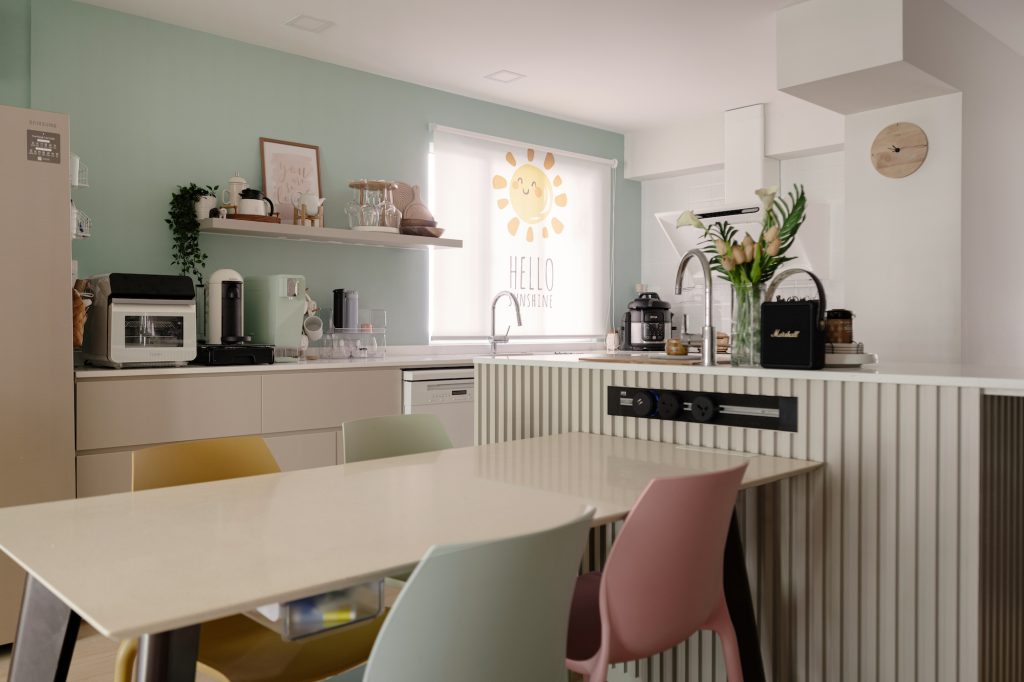
Pollutants easily accumulate when house members engage in day-to-day activities, causing a drop in air quality. There are some minor changes and habits that can help reduce indoor pollutants:
- Try to avoid burning wood, incense, and candles indoors as they may release harmful chemicals into the air. You can instead opt for oil diffusers or LED candles as they’re a safer option.
- Try to avoid smoking indoors as they carry harmful toxins and have a direct impact on those around you.
- Make sure to allow the airflow indoors when you engage in activities, such as cooking, cleaning, and painting. Some prefer using exhaust fans or air purifiers in their kitchen to get rid of the smoke.
- Select products with low volatile organic compounds (VOC). Check the labels when purchasing paints and other cleaning products.
Cleaning Habits to Ensure Healthy Indoor Air Quality
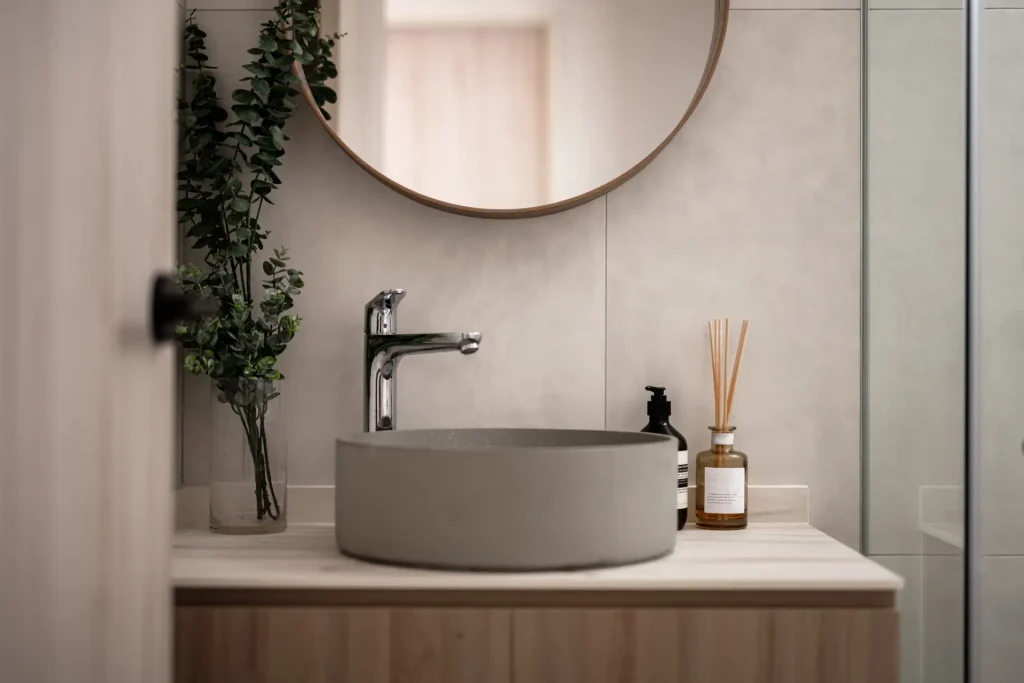
All the above tips will help you improve the air quality index in your home but you have to be mindful of certain cleaning habits as well. If you have a fixed routine with these cleaning habits, you will be able to ensure healthy indoor air quality within your space.
Even though you will not see them, there are microscopic particles of allergens and dust that accumulate in several parts and surfaces of your home. These are more dangerous than we assume, which is why it is important to design your interiors in a way that this matter is addressed.
For example, say you’ve designed your home in a minimalist and practical style, then you’ll be able to access the corners and surfaces easily. And the best part is that minimalistic home interiors are not only practical but also stunning. You can check our gallery here.
Now, let’s see some of the simple cleaning habits you can incorporate into your routine.
HEPA (high-efficiency particulate air) Filters for Vaccum Cleaners
People often overlook these factors, but these minor elements have a greater impact on your health. When you invest in a HEPA-filtered vacuum cleaner, you will be getting a cleaner space in return.
Wash Your Fabrics Frequently
Most of us often forget to clean our cushion covers and curtains. But they are used daily, so imagine the dust and other dirt accumulating on them. This is why we suggest washing your bedding at least once a week whereas you should wash your cushion covers and curtains regularly too.
If you haven’t done this before, it might be overwhelming but as you get comfortable with washing them weekly, it’ll become a practice. Make sure to use hot water so that you can get rid of dust and allergens.
Get Rid of the Clutter
This is vital because clutter not only accumulates unnecessary dust particles that eventually reduce the air quality but also becomes a nuisance to your mind. By getting rid of the clutter, you will be able to remove potential areas and things for dust accumulation. You will also find it peaceful when you don’t have unnecessary things to deal with.
Use a Damp Cloth to Dust
It’s common to use a regular cloth to dust the surfaces, but it can easily reverse the particles into the air. This is why it’s advisable to use a damp cloth and slowly wipe off the dirt without dusting it from a distance.
Conclusion
These simple habits can help you improve your indoor air quality while empowering a wellness-induced home environment. All in all, the way you designed your home has a role to play, so make all your decisions accordingly.
If you want to revamp your home interior or want to discuss it further feel free to get in touch with our team. We’ve done projects across Singapore, and our happy clients speak of our service. We ensure to provide the best of services for you as well.